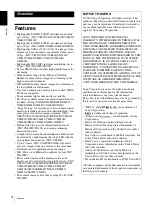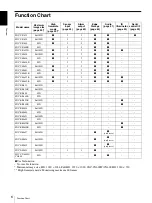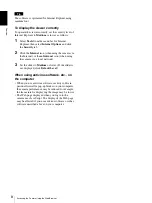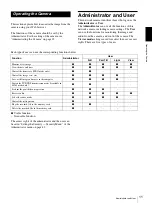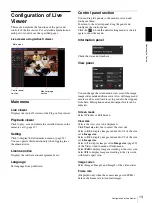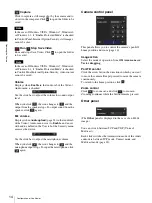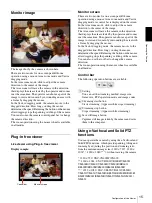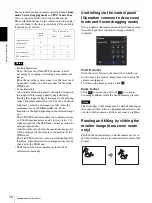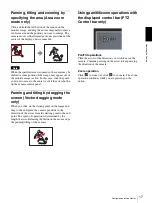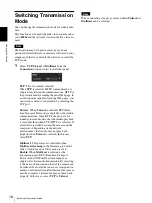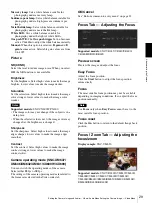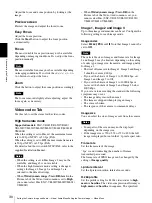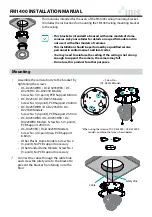
Op
er
at
ing t
he Camer
a
Switching Transmission Mode
18
Switching Transmission
Mode
You can change the transmission mode for video/audio
data.
This function can be used when the video codec mode is
set to
H.264
and the ActiveX viewer in the live viewer is
used.
Note
The function may not operate correctly if you use
personal firewall software or antivirus software on your
computer. In that case, disable the software or select the
TCP mode.
1
Select
TCP, Unicast
or
Multicast
from the
Connection
drop-down list in the Other panel.
TCP:
This is normally selected.
When
TCP
is selected, HTTP communication is
adopted for video/audio communications. HTTP is
the protocol used for reading the usual Web page. In
an environment capable of reading Web pages, you
can watch or listen to video/audio by selecting the
TCP port.
Unicast:
When
Unicast
is selected, RTP (Real-
time Transport Protocol) is adopted for video/audio
communications. Since RTP is the protocol for
running video/audio data, the video/audio playback
is smoother than when TCP (HTTP) is selected. If
a firewall is installed between the camera and the
computer, or depending on the network
environment, video/audio may not play back
properly when
Unicast
is selected. In this case,
select
TCP
.
Multicast:
This protocol is selectable when
Multicast streaming
in the Streaming tab of the
Video / Audio menu or Video menu is set to
Enable
. When
Multicast
is selected as the
transmission port, RTP (Real-time Transport
Protocol) and UDP multicast techniques are
adopted for video/audio transmission. By selecting
it, the network transmission load of the camera can
be reduced. If a router that does not correspond to a
multicast or firewall is installed between the camera
and the computer, video/audio may not play back
properly. In this case, select
TCP
or
Unicast
.
Note
When connecting via a proxy server, neither
Unicast
nor
Multicast
can be selected.
Summary of Contents for SNCEM602R
Page 77: ...Sony Corporation ...

